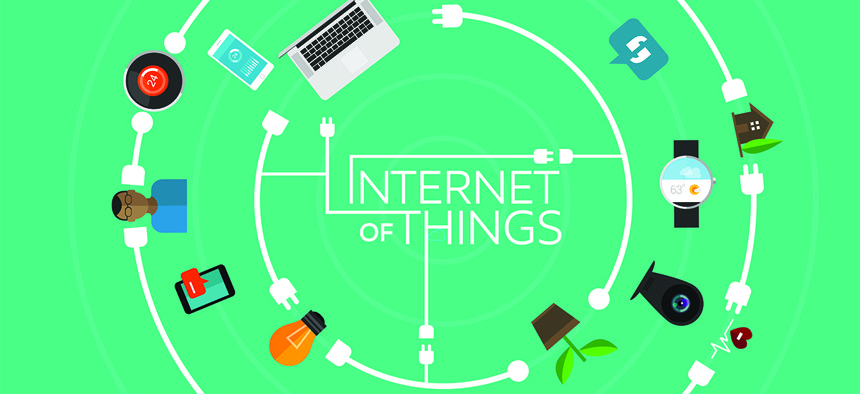NIST Tries to Define ‘Internet of Things’

Bakhtiar Zein/Shutterstock.com
Technologists can’t really agree on what qualifies as part of that network of devices and sensors.
One federal agency wants to make it easier for technologists to talk about the internet of things, often loosely defined as a group of “sensory devices” regularly sending feedback to a larger network.
In a new publication, the National Institute of Standards and Technology makes an early attempt to describe the parts making up that network. The framework is intended to provide a common vocabulary to help groups talking about the internet of things to ensure they’re talking about the same elements, NIST Computer Scientist Jeffrey Voas wrote in the document.
“There is no formal, analytic, or even descriptive set of the building blocks that govern the operation, trustworthiness and lifecycle” of the internet of things, Voas wrote.
» Get the best federal technology news and ideas delivered right to your inbox. Sign up here.
The document distinguishes between a “network of things,” in which objects might simply be connected to each other, and the “internet of things,” in which those objects are definitely internet enabled. According to NIST, the broad building blocks of a network of things might include sensors, which could measure factors such as temperature or acceleration; aggregators, which gather the data from those sensors; communication channels that transmit that data elsewhere; an external utility that receives that data; and a decision trigger, which makes use of that data and does something with it.
In one example NIST provides, a light is programmed to shut off if no one is in the room. A sensor detects motion and transmits information about motion in the room, or lack thereof, through a communications channel to an aggregator, which might be software loaded on an external utility, such as a laptop. The decision trigger is the component that decides to turn the light off based on the information initially collected from the sensor.
Various elements could help users determine whether networks are trustworthy and reliable, Voas wrote — these might include the environment in which the network operates, the cost of building that network, and its geographic location.
Though NIST is attempting to clarify conversations about the internet of things with this document, Voas noted there were still “relatively few standards” for security design and testing for that network.





